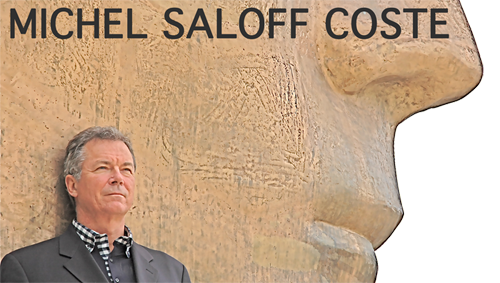Every three years, the Programme of International Student Assessment (PISA) conducts an international assessment of the educational programs provided in countries across the world. The test measures the skills and knowledge of 15-year olds in over 70 countries, regions, and economies, covering reading, math and science. In addition, education systems can also choose to test their students in creative problem-solving and/or financial literacy.

Image via flickr and Paul VanDerWerf
The test is given at random schools worldwide and is a mix of multiple choice questions and open-ended responses. The PISA test is not based on any particular school curriculum. Instead, it is intended to measure how students at the end of compulsory education (age 15 in many counties) apply what they’ve learned to real life skills.
The 2012 PISA results are the most recently published (2015 test results were not available at the time of this article). Many of the top performing countries from 2009 continued to dominate the assessment. However, a few newcomers—Taiwan, Estonia, and Poland—edged their way into the 2012 rankings. Let’s take a look at the top 10 performing counties in the world based on the PISA assessment and see what they’re doing right for students, teachers, and schools.
Top 10
Canada: In Canada, there is not a lot of difference in how students across racial, ethnic, socioeconomic statuses perform on the PISA. Even students from heavily populated province, Ontario, had strong scores. The Canadian education system is decentralized; each province and territory has control over curriculum. However, the provinces use each other as models and benchmarks when devising new best practices. The regional governments work together to maintain rigorous teacher recruitment and training practices. Family engagement, dropout prevention, and technology initiatives are also front and center in some of Canada’s latest education reforms.
Finland: We’ve previously covered the educational initiatives in Finland that make its schools stand out on the world stage. In fact, since Finland first topped the PISA results back in 2000, the Ministry of Education in Finland has had to form an entire unit devoted to helping foreigners with their requests to better understand the Finnish education system. School autonomy and teacher education are cornerstones to the success in Finland. Schools are allowed to choose their own books, textbooks, and curriculum materials. Teachers are required to have master’s degrees. Because of the extent of a teacher’s training and preparation, they are given a lot of freedom in how they organize their class.
Japan: The Japanese educational system has long focused on preparing students for future work and involvement in society. Japan’s meritocratic society drives people to perform and achieve to the best of their abilities—so that they may access opportunities by their own merit. Japanese curriculum is famous for being rigorous and dense. Students in Japan learn about world cultures in great depth. In addition, the math and science programs in the country are extremely demanding. Students work hard to gain acceptance from family, friends, and classmates. Curriculum in Japan tends to focus as much on how to do something (skill-based) to why something works (application-based).
Poland: Poland ranked below average in PISA’s first assessment in 2000. By 2012, it ranked in the top 10 educational systems in the world. One of the reforms that helped Poland grow was to get rid of the school structure that existed under the communist regime, namely that only students who scored in the top 20% of a high stakes test taken at age 14 would continue on with their education, while the rest would enter vocational school. Today, students in Poland go to school through age 15, at which time they are given four options for continuing their education, all of which lead to the opportunity to take the university entrance exams. In addition, teacher training has expanded to focus on both technical and vocation skills, as well as on how to help students in a strong global economy. Poland also has a goal of expanding early childhood education and enrolling 90% of all 4 and 5 years olds by 2020.
Singapore: In its 50 years of existence as an independent country, Singapore has undergone three distinct education reforms to bring it into the top 10 best educational programs in the world. First, Singapore wanted to improve literacy. The country wanted to provide cheap labor to the world market and knew that the workers needed to be literate. The next phase of reform was to develop a quality school system with high student retention rates. To do this, Singapore tracked students into ability groups called “streams.” Teachers focused on teaching to one learning mastery level at a time. Curriculum and materials were then developed for each “stream of students. By 2008, the third phase of reform began. Ability grouping was abandoned and schools focused on teaching students deeper, more conceptual material. Arts and sports were introduced into schooling, and teacher development was heavily funded.
Estonia: the country of Estonia gained independence in 1992. Since then, the country has worked to rebuild its education system. They focus on three main areas: developing a new, national curriculum; training teachers in innovative practices; and upgrading vocational education. The new curriculum focuses not only on traditional academics, but also on personal skills, like time management, and communication. Teacher training focused on critical thinking skills in a new, high-tech economy.
Hong Kong: Hong Kong has been a major player in the global business and financial sectors for some time. The city began to realize that it had priced itself out of the cheap labor market and needed to focus on educating its people. Major reforms began with providing education for more than just a small elite. Secondary and higher ed education became nearly universal. A shift from rote memorization to higher level thinking skills began in the 1990s. Students now are tested not only with traditional assessments, but also with real life applications. The Hong Kong educational system values constructivist based learning and students get hands on training and practice with many skills.
South Korea: Under Japanese occupation, South Koreans were not allowed to teach or to attend secondary school. When the Japanese left, more than 78% of the population of South Korea was illiterate. Though they tried to kick-start their own educational programs, the war between North and South Korea in the 1950s devastated the beginnings of that fresh start. When South Korea was finally able to design their educational system, they made it strict, rigorous, and full of tests. Students in Korea study longer hours than anywhere else in the world. There is enormous pressure to perform well, both to access future opportunities and to avoid shaming your family. The South Korean only spends about half of what America does per pupil, but families often contribute an additional 15% of that amount to private tutoring and weekend school.
Shanghai: This Chinese city is unique in many ways. It regards choice and inquiry as the cornerstones of education. In the late 1980s, Shanghai began giving students more choice in the curriculum. In the 1990s, the city began integrated science and humanities courses in an effort to emphasize inquiry. These major changes led to students who move from simply acquiring information to those who worked actively to gather and use their knowledge in productive ways. Teacher training and development has been another hallmark of the Shanghai education system over the last 20 years. Teachers in Shanghai today are encouraged to lecture less often, and instead provide hands on, constructive activities to promote learning.
Taiwan: This tiny island has always had few natural resources, so the government spends a great deal of money on education so that the people of Taiwan will have something to offer the global economy. Taiwan considers itself a “knowledge economy.” Taiwan’s schooling programs includes: 12 years of compulsory education, locally controlled curriculum, early childhood education, vocational and arts education, technology-rich classrooms, and subsidies for students from lower socioeconomic status families to attend higher performing schools.
In Short
The top performing school systems from all around the world have many things in common, including an emphasis on curriculum and teaching preparation, and a willingness to reform when needed. However, many of the countries on this list approach these educational components in very different ways. This goes to show that, when the government cares enough to invest in creating a thriving educational system, there’s no “right way” to do so. All that’s required is a willingness to know when change is needed, and the will to dig in and do it.
Editor’s note: This is a revised version of an article written by Katie Lepi that originally appeared on May 23rd, 2013. We believe this information is still highly relevant, but we wanted to update it with the latest thinking. To do that, we invited writer Amanda Ronan to take the reins.

Aucun commentaire:
Enregistrer un commentaire